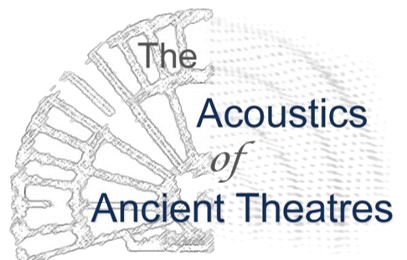
The Acoustics of Ancient Theatres
International Symposium
Verona - Italy, 6 to 8 July 2022
Theoretical investigation of diffraction phenomena in the ancient theatre of Epidaurus
Penelope Menounou , Spyros Bougiesis
DOI: https://doi.org/10.58874/SAAT.2022.104
Abstract:The effect of edge diffraction
in ancient theatres is in vestigated. A cross section of the theater of Epidaurus simplified as
right angled steps is considered. A recently presented solution for computing the impulse response around a rigid wedge
is em p loyed for the theoretical study of diffraction by the edges of the steps. It is shown that diffracted sig nals coming
from edges below a listener come close together and with relative s mall amplitude. D iffracted signals from edges above
the listener come further apart, some with very large amplitude and almost all with negative polarity. A new parameter is
proposed that predict s the effect of edge diffraction based solely on geometrical characteristics. It is show n that the
height of the source and the inclination of the steps affect the diffraction contributions the most. The effect of the various
d iffraction contributions to acoustic indices is considered next. For the computation of t he acoustic indices the relative
strength between geometrical and diffraction contributions, wh ich are different in nature, must be determined . In the
sent work this is done via the unit step responses. U pper diffraction s affect negatively the acoustic indices , considerably
more than lower diffractions A source positioned at the height of a deus ex machina improves the acoustic indices com-
pared to a source a t the height of a standing actor.Large inclination angles of the steps affect negatively the acoustic indi-
ces. Finally, results including the effect of all geometrical and all diffraction contributions are compared with published
measured data for the theater of Epidaurus.
Keywords:Edge diffraction
Pages:23-26
Paper:![]()